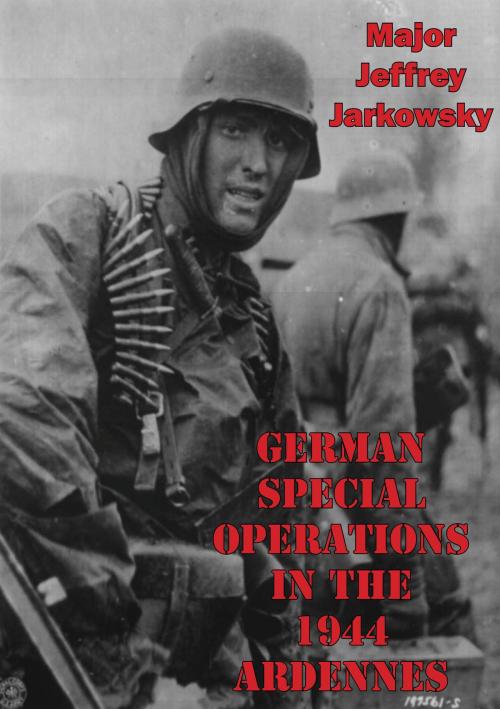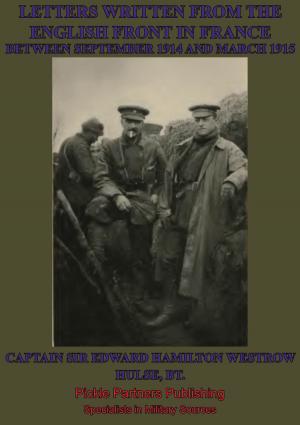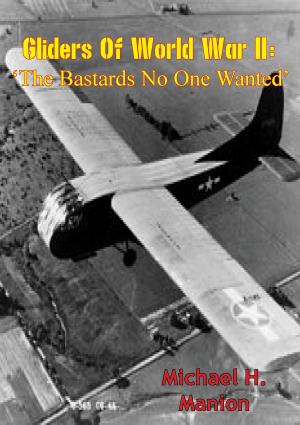German Special Operations In The 1944 Ardennes Offensive
Nonfiction, History, Germany, European General, Military, United States| Author: | Major Jeffrey Jarkowsky | ISBN: | 9781782894995 |
| Publisher: | Lucknow Books | Publication: | August 15, 2014 |
| Imprint: | Lucknow Books | Language: | English |
| Author: | Major Jeffrey Jarkowsky |
| ISBN: | 9781782894995 |
| Publisher: | Lucknow Books |
| Publication: | August 15, 2014 |
| Imprint: | Lucknow Books |
| Language: | English |
This study is a historical analysis of the German special operations conducted in support of their overall Ardennes offensive. It focuses on the two major special operations of the German offensive, Operations “Greif” and “Stoesser.” Operation Greif was the German attempt to infiltrate a commando unit behind American lines disguised as American soldiers. Operation Stoesser, the last German airborne operation of the war, was designed to secure a key cross-roads behind American lines. These special operations failed because of faulty planning, inadequate preparation, and a lack of coordination between the special and conventional forces. These problems, exacerbated by a lack of preparation time, resulted in a pair of ad-hoc units that were unable to accomplish their primary missions, although the operations were characterized by boldness, initiative, and improvisation. This study also examines the strategic setting, planning, preparations, and conduct of these operations, as well as their impact on the overall campaign. This study also examines the key lessons-learned that can be derived from both operations. Lastly, the study explores the implications of these lessons for the U.S. military of today.
This study is a historical analysis of the German special operations conducted in support of their overall Ardennes offensive. It focuses on the two major special operations of the German offensive, Operations “Greif” and “Stoesser.” Operation Greif was the German attempt to infiltrate a commando unit behind American lines disguised as American soldiers. Operation Stoesser, the last German airborne operation of the war, was designed to secure a key cross-roads behind American lines. These special operations failed because of faulty planning, inadequate preparation, and a lack of coordination between the special and conventional forces. These problems, exacerbated by a lack of preparation time, resulted in a pair of ad-hoc units that were unable to accomplish their primary missions, although the operations were characterized by boldness, initiative, and improvisation. This study also examines the strategic setting, planning, preparations, and conduct of these operations, as well as their impact on the overall campaign. This study also examines the key lessons-learned that can be derived from both operations. Lastly, the study explores the implications of these lessons for the U.S. military of today.

![Cover of the book The Road To St. Mihiel [Illustrated Edition] by Major Jeffrey Jarkowsky](https://www.kuoky.com/images/2015/november/300x300/9781786253125-D1Fb_300x.jpg)
![Cover of the book A Volunteer Poilu [Illustrated Edition] by Major Jeffrey Jarkowsky](https://www.kuoky.com/images/2014/august/300x300/9781782893110-8OEc_300x.jpg)
![Cover of the book 4th Armored Division In The Encirclement Of Nancy [Illustrated Edition] by Major Jeffrey Jarkowsky](https://www.kuoky.com/images/2014/august/300x300/9781782893868-4xCN_300x.jpg)
![Cover of the book The Big Fight (Gallipoli To The Somme) [Illustrated Edition] by Major Jeffrey Jarkowsky](https://www.kuoky.com/images/2015/november/300x300/9781786255273-sC78_300x.jpg)









![Cover of the book Surgeon In Arms [Illustrated Edition] by Major Jeffrey Jarkowsky](https://www.kuoky.com/images/2015/november/300x300/9781786255457-GW4K_300x.jpg)
